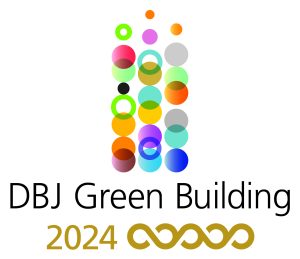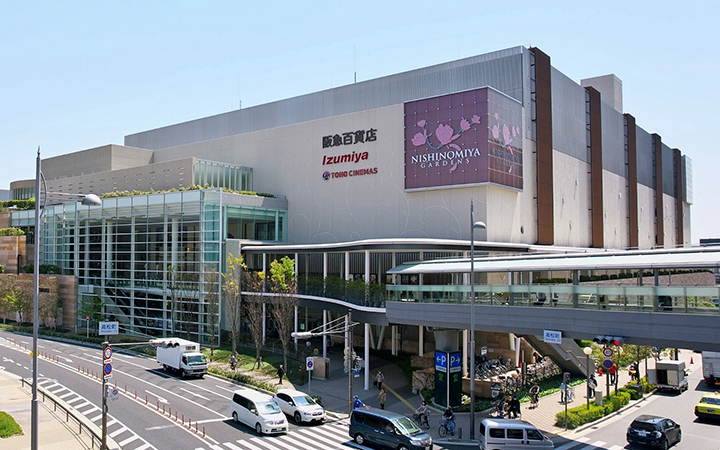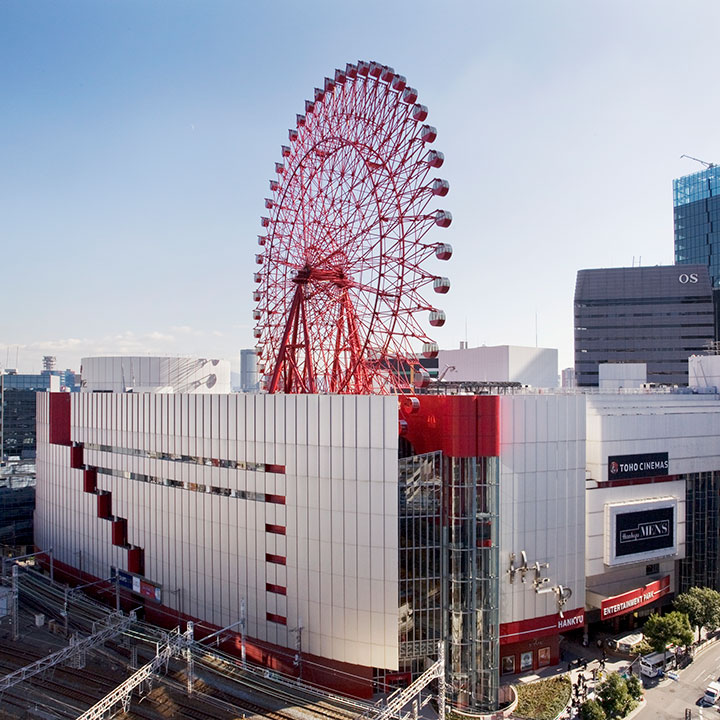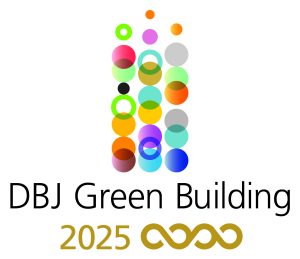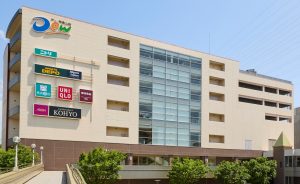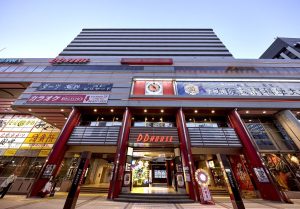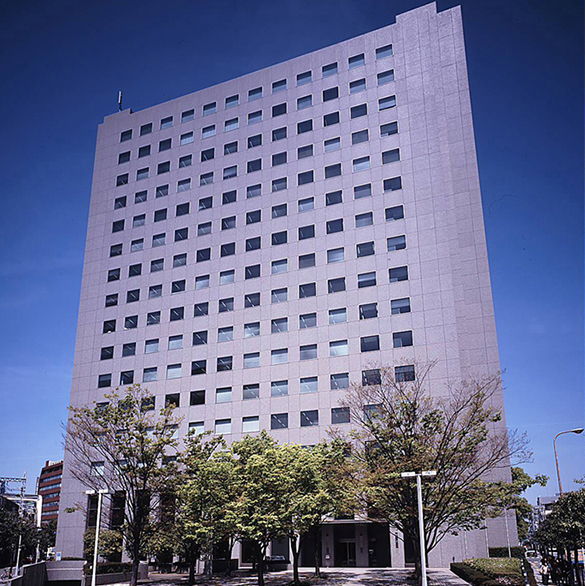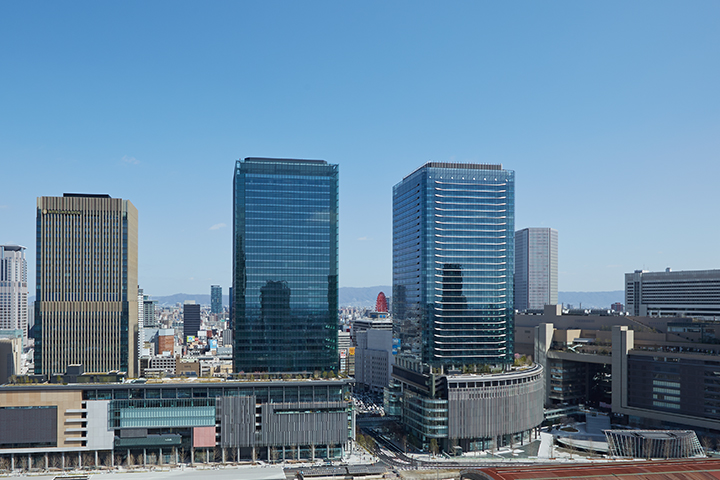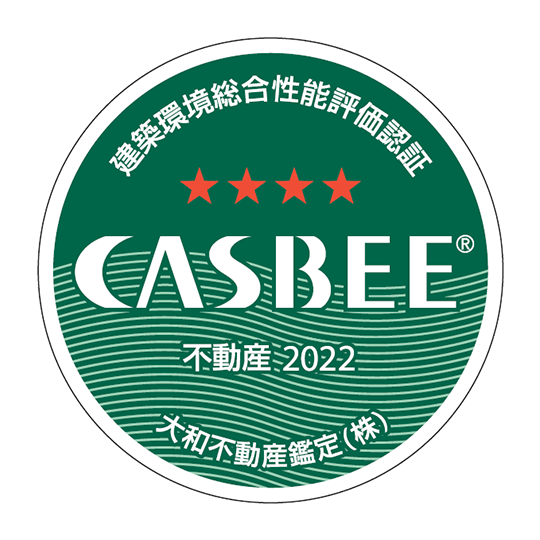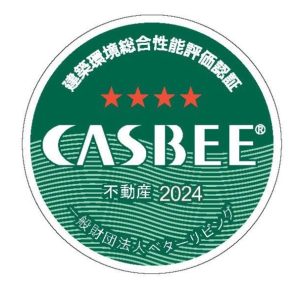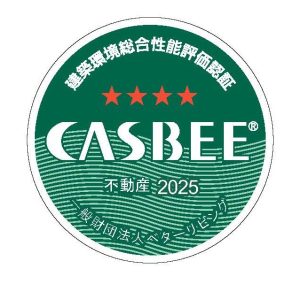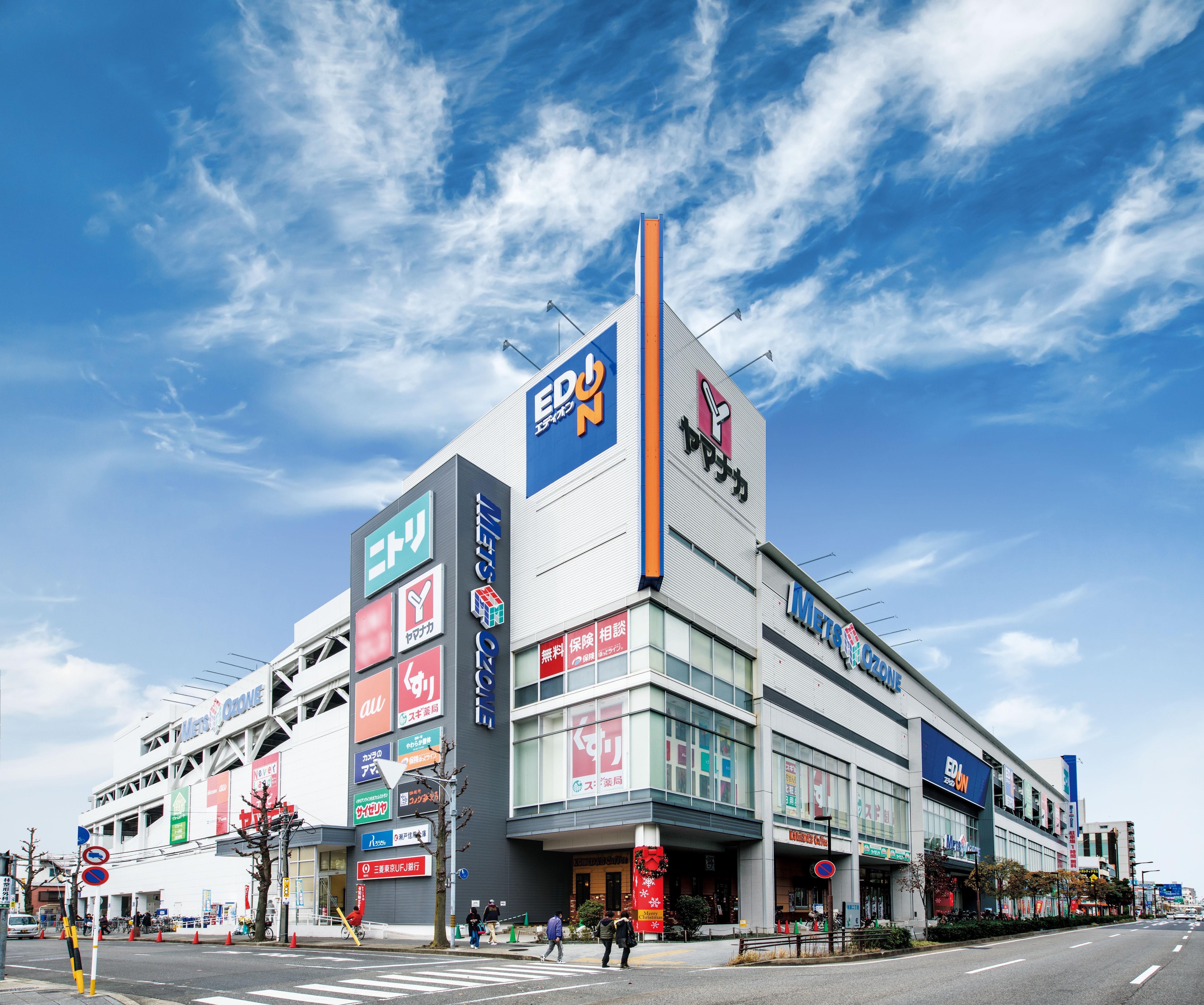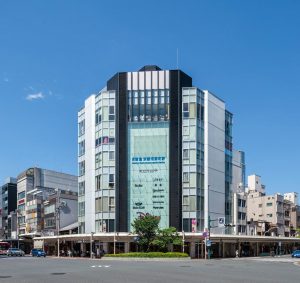Environmental Initiatives
- Environmental Targets
- Energy consumption / Water consumption / Greenhouse gas emissions
- Energy Management
- Water Resource Initiatives
- Circular Economy Initiatives
- External Certifications
- Green Finance
Environmental Targets
The following environmental targets toward carbon neutrality and net-zero emissions by 2050 were established at the Sustainability Promotion Committee meeting held in March 2025.
- GHG emissions: To be reduced by 60% by fiscal 2030
- Energy consumption: To be reduced by 1% annually
- Water consumption: To be reduced by 10% by fiscal 2030
- The intensity, and base year is fiscal 2018.
For the fiscal 2050 target (long-term target), we will accelerate various initiatives for carbon neutrality and net-zero emissions.
Energy consumption / Water consumption / Greenhouse gas emissions
| FY2018 | FY2019 | FY2020 | FY2021 | FY2022 | FY2023 | FY2024 | |||
|---|---|---|---|---|---|---|---|---|---|
| Energy consumption | Consumption (MWh) | 87,595 | 91,101 | 74,471 | 70,414 | 70,390 | 69,642 | 69,501 | |
| Intensity (kWh/㎡・year) | 274 | 269 | 219 | 208 | 218 | 214 | 212 | ||
| Intensity YoY | - | 98.2% | 81.4% | 94.6% | 104.9% | 98.5% | 99.0% | ||
| Intensity compared with base year | - | 98.2% | 80.0% | 75.7% | 79.4% | 78.2% | 77.4% | ||
| Water consumption | Consumption (㎥) | 558,468 | 577,493 | 391,365 | 380,699 | 452,358 | 485,792 | 479,463 | |
| Intensity (㎥/㎡・year) | 1.719 | 1.710 | 1.152 | 1.118 | 1.395 | 1.491 | 1.461 | ||
| Intensity YoY | - | 99.5% | 67.4% | 97.1% | 124.7% | 106.9% | 98.0% | ||
| Intensity compared with base year | - | 99.5% | 67.0% | 65.0% | 81.1% | 86.7% | 85.0% | ||
| Greenhouse gas emissions | Emissions(t) | 30,372 | 27,375 | 22,092 | 22,083 | 19,498 | 24,060 | 15,073 | |
| Scope1 | - | - | - | - | 1,929 | 1,893 | 1,819 | ||
| Scope2 (Market-based) |
- | - | - | - | 5,968 | 7,199 | 3,289 | ||
| Scope3 (Category 13) |
- | - | - | - | 11,601 | 14,968 | 9,965 | ||
| Intensity(t/㎡・year) | 0.095 | 0.081 | 0.065 | 0.065 | 0.060 | 0.074 | 0.046 | ||
| Intensity YoY | - | 85.6% | 80.0% | 100.2% | 92.5% | 122.6% | 62.5% | ||
| Intensity compared with base year | - | 85.6% | 68.5% | 68.7% | 63.5% | 77.8% | 48.6% | ||
| Scope2 (Location-based) |
- | - | - | - | 9,092 | 9,036 | 8,765 | ||
| Scope1+Scope2(Location-based)+Scope3 | - | - | - | - | 22,622 | 25,897 | 20,549 | ||
-
As of October 1, 2025. The figures may be adjusted retroactively due to additional acquisition of past data, and revision of data collection range.
- Figures for the entire portfolio are covered here.
(Please note that site properties are excluded, that figures for properties under co-ownership are derived by multiplying the ownership rate, and that data difficult to compile due to direct contracts with tenants or other reasons are partially excluded from gas consumption figures) - Energy consumption and greenhouse gas emissions are derived by multiplying coefficients or other values based upon the Mandatory GHG Accounting and Reporting System established by the Ministry of the Environment.
- Calculated using emission factors corresponding to the actual contracted electricity plan under Scope 2 market-based approach.
- Greenhouse gas emissions include Scope 3 (Category 13: emissions coming from downstream leased assets)
Third-party Assurance
To enhance credibility, some of the data used for the energy consumption and intensity has limited assurance from a third party, Sustainability Accounting Co., Ltd.
Energy Management
Established the Energy Conservation Policy
Based on the "Energy Conservation Policy" established in March 2019, HHR and HHRAM will continually seek to understand the energy consumption levels of the portfolio and measure the rate of achievement against the targeted values. Considerations for operational improvements and equipment investments will be made for energy inefficient properties, and we will continually aim to reduce energy consumption across the entire portfolio.
- Initiatives through equipment renovation
For measures that require equipment investments such as switching to LED lighting and switching to high efficiency air conditioning, measures that are the most cost-effective will be prioritized based on consideration of the lifecycle costs, etc.
- Initiatives through operational improvement
HHR promotes initiatives in collaboration with the property management companies and tenants, including:
- Inspecting for forgotten electrical and gas appliances left on after closing
- Saving energy during periods of absence or non-use (hallways, warehouses, conference rooms, etc.)
- Setting appropriate temperatures for common area air conditioning
- Setting appropriate temperatures for warm water in toilet sink and toilet seat heaters during summer
- Implementing appropriate lighting reduction measures in back areas.
Application of leading project to reduce carbon footprint in housing / buildings
A leading project to reduce carbon footprint in housing / buildings is a project that is selected after the government solicits entries of housing / building projects to become leading projects for carbon footprint reduction, and offers support for them from its budget by subsidizing part of the projects’ cost, such as maintenance costs. GRAND FRONT OSAKA was chosen as the leading project in 2009. Its "organizing an integrated water and green network over multiple city blocks", "adoption of highly effective carbon footprint reduction technology" and "building a sustainable management system" initiatives were adopted to realize its environment-friendly design such as extensive greenery on the rooftops and in the surrounding city blocks, natural ventilation system and adoption of a solar power system.
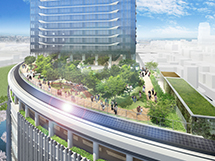
Utilization of renewable energies
Introduction of electricity generated virtually from renewable energy
At the following properties, all electricity consumed throughout the facilities, including both common and tenant-exclusive areas, has been switched to virtually renewable energy. Furthermore, at GRAND FRONT OSAKA we installed Japan's fastest EV charging stations equipped with battery storage systems using this power starting in December 2023. This provides EV owners visiting Osaka with a convenient and environmentally friendly charging experience.
GRAND FRONT OSAKA, HEP Five, LAXA Osaka, HANKYU NISHINOMIYA GARDENS, SHIBAURA RENASITE TOWER, kotocross Hankyu Kawaramachi, H-CUBE MINAMIAOYAMA, H-CUBE MINAMIAOYAMA II, H-CUBE KITAAOYAMA
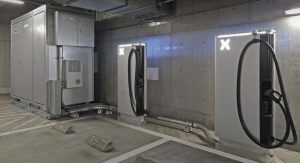 EV charging stations
EV charging stationsImplementation of solar power generator facilities
Solar panels have been installed above the south parking lot of HANKYUNISHINOMIYA GARDENS (along Yamate Kansen), and the powergenerated is used to illuminate the lights. Solar panels have been alsoinstalled on the roof of HEP Five, and the clean natural energy is used tolight up the Ferris wheel. A monitor indicating the quantity of energyg enerated by the sunlight has been set up in the atrium on the first floor. Furthermore, the amount of energy generated and consumed is as follows.
| Property name | FY2018 | FY2019 | FY2020 | FY2021 | FY2022 | FY2023 | FY2024 |
|---|---|---|---|---|---|---|---|
| HEP Five | 18,054 kWh |
18,197 kWh |
18,432 kWh |
17,473 kWh |
18,394 kWh |
17,438 kWh |
17,625 kWh |
- As of October 1, 2025
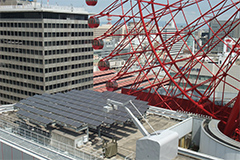 Solar panels
Solar panelsInstallation of wind turbine generator system
At HANKYU NISHINOMIYA GARDENS, hybrid-type generators that combine savonius wind turbines with solar panels have been installed, and the power generated is used to illuminate the rooftop lights.
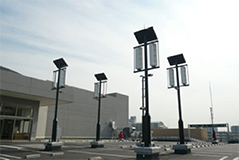 Savonius wind turbines with solar panels
Savonius wind turbines with solar panelsSwitching to LED lighting
From the perspective of energy-saving measures, HHR promotes the switch to LED lighting ateach portfolio property. As of the end of October 2025, HHR has upgraded common area lights (excluding backyards) to LED lighting in 15 properties, accounting for more than 70%of its total owned properties, and almost all the lights, including the exclusive areas, have beenupgraded at Ueroku F Building and kotocross Hankyu Kawaramachi, while HHR continues tosequentially upgrade mainly common area lights in other buildings.
Introduction of heat-shielding paint
At METS OZONE, heat-shielding paint has been applied to some window surfaces to suppresssolar heat gain. This helps maintain appropriate indoor temperatures, thereby reducing the airconditioning load and promoting energy saving.
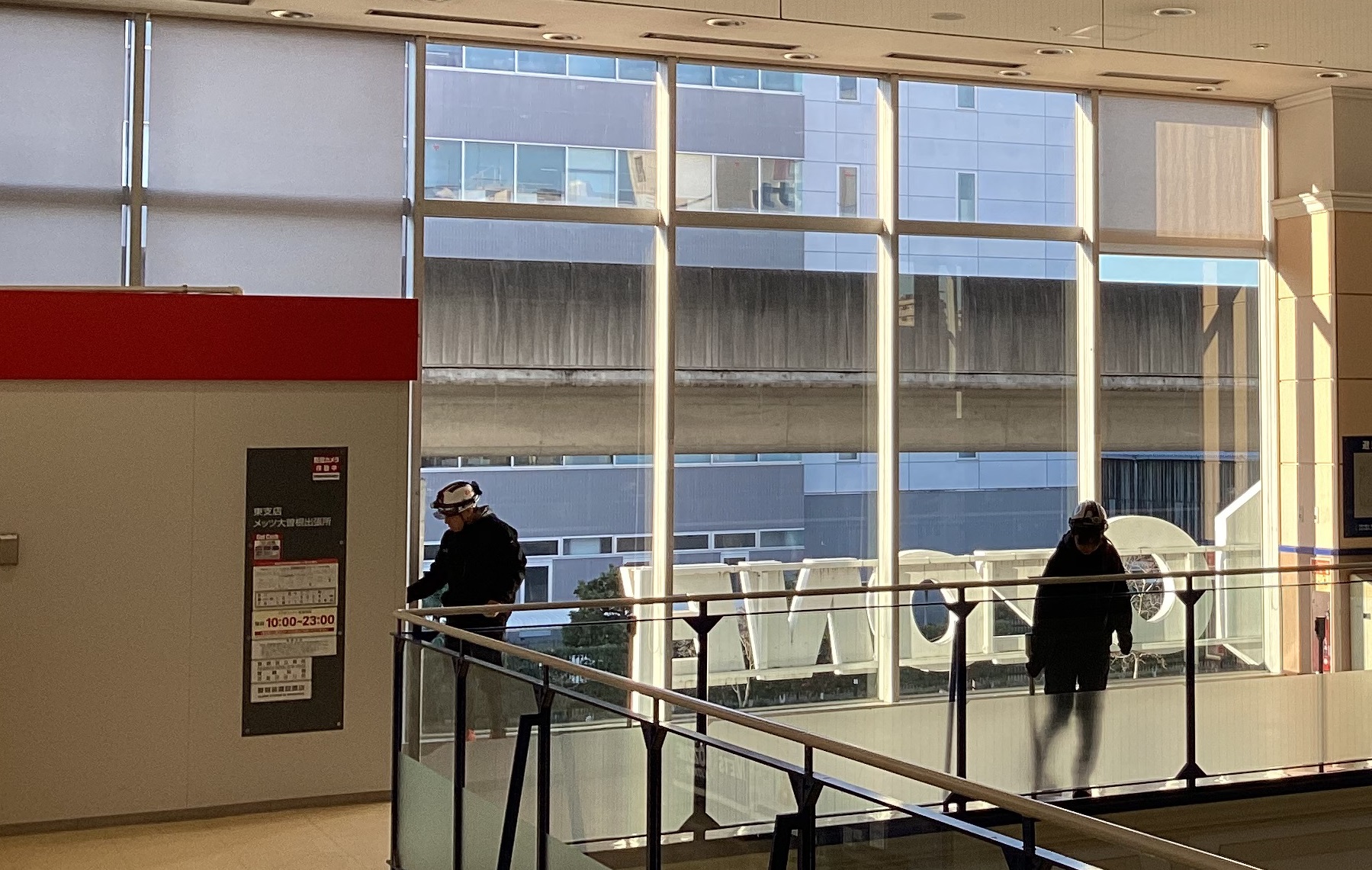
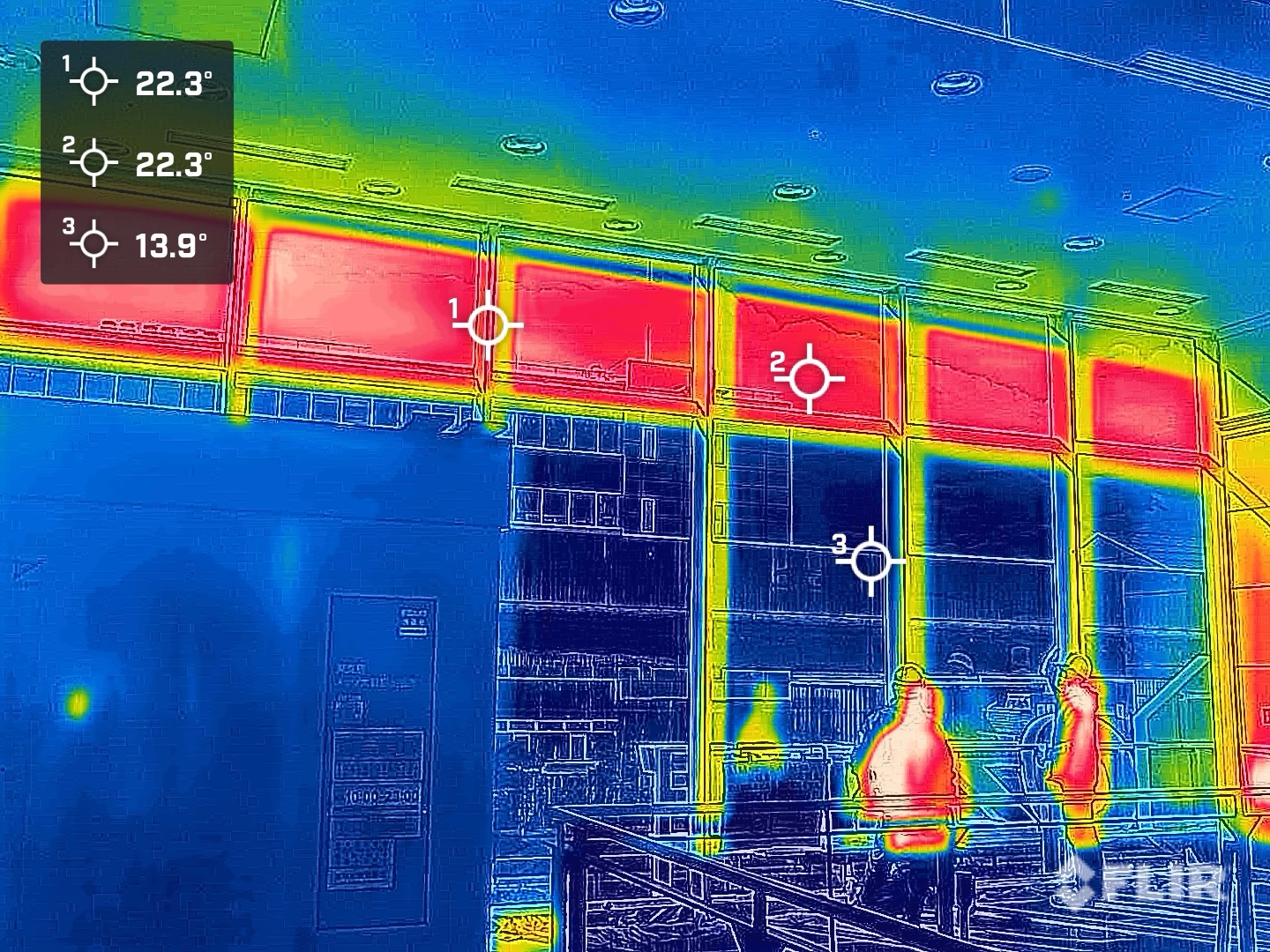
Countermeasures against urban heat islands
As a countermeasure against urban heat islands that occur in the summer, we have installed a fountain and mist spraying system in the rooftop sky garden of HANKYU NISHINOMIYA GARDENS, water sprinklers on the roofs ofcinema complexes, and water facilities such as cascades and a mist projection system at the Umekita Plaza of GRAND FRONTOSAKA. These have contributed to cutting CO2 emissions by reducing the load placed on air conditioners.
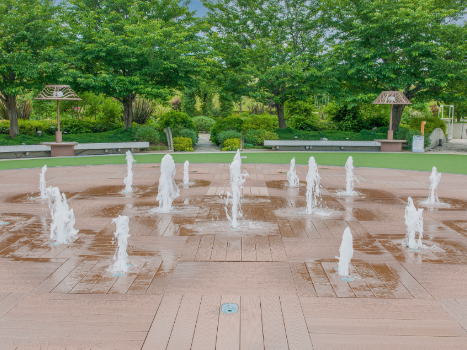
Promoting green walls and planting vegetation in urban areas
At GRAND FRONT OSAKA, there is the 500-meter-long "Icho Namiki" (row of ginkgo trees) that encircles thebuilding, and the "Keyaki Namiki" (row of zelkova trees) that runs east-west between the South Building and theNorth Building. The 4,000 m2 garden on the north side of the North Building is a space where people canexperience the changes in the four seasons, and people enjoy walks in the garden throughout the year.Moreover, on the roof of the 9th floor of the South Building and the North Building, there is a rooftop gardentotaling more than 10,000 m2. This space creates a place where office workers can exchange ideas. In addition, the Sky Garden on the rooftop of HANKYU NISHINOMIYA GARDENS is a space of relaxation forthose who visit. This is because vegetation indigenous to the Rokko mountain range is planted in the gardensuch as trees, cherry trees, and fruit trees, based on the facility concept of "harmony with the naturalenvironment".
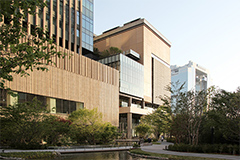 Icho Namiki
Icho Namiki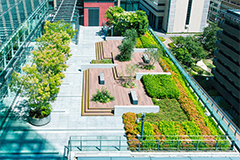 Rooftop garden
Rooftop garden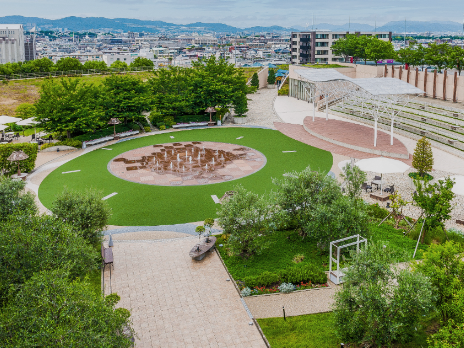
Sky garden
Collaboration with tenants
Promotion of green lease agreements
Green lease agreements are agreements in the form of a contract or memorandum, etc. voluntarily entered into by building owners and tenants and concern reduction of environmental load through energy conservation at real estate and improvement of working environment, as well as implementation of their content. HHR will strive to increase the number of agreements that have green leases in their clauses.
Case of concluded green lease agreement
As of the end of October 2025, agreements with a green lease clause have been concluded with tenants, who have a strong interest in sustainability among fifteen properties owned by HHR. The provisions of the agreements for the main properties include the following:
- Suppression of amount of energy and water used in area leased by the tenant, suppression of waste generated and promotion of waste-sorting on a daily basis, and establishment of system for voluntary management of such;
- Suppression of amount of energy and water used in construction work in area leased by the tenant and when procuring goods, suppression of waste generated and introduction of environmentally friendly materials;
- Cooperation toward sustainability promotion measures (obtaining certifications, exchanging information on amounts of energy usage, water usage and waste generated, and keeping and improving comfort in building).
Water Resource Initiatives
Established the Water Conservation Policy
Based on the "Water Conservation Policy" established in March 2019, HHR and HHRAM will continually seek to understand the water consumption levels of the portfolio and measure the rate of achievement against the targeted values. Considerations for operational improvements and equipment investments will be made for water resource inefficient properties, and we will continually aim to reduce water consumption across the entire portfolio.
- Initiatives through equipment renovation
For measures that require equipment investments such as switching to water conservation equipment and installing water-saving devices, measures that are the most cost-effective will be prioritized based upon consideration of the lifecycle costs, etc. - Initiatives through operational improvement
We are working together with property management companies and tenants to conserve water during routine cleaning, check for leaks in washrooms and restrooms during patrols, and make every effort to conserve water.
Reusing rainwater
At HANKYU NISHINOMIYA GARDENS, GRAND FRONT OSAKA, and METS OZONE, rainwater is stored and reused as sprinkling water for plants and for flushing toilets.
Installation of kitchen wastewater pretreatment equipment
By installing kitchen wastewater pretreatment equipment at HANKYU NISHINOMIYA GARDENS, the pollutants found in kitchen wastewater produced by cafés and restaurants are reduced by processing it with mixed-microbial communities, before draining it into public sewage systems. As a result, HANKYU NISHINOMIYA GARDENS is able to maintain water quality that falls well within the wastewater standards for sewage systems of Nishinomiya City.
Circular Economy Initiatives
Waste management
HHR and HHRAM regularly seek to understand the figures submitted by the waste disposal operators of the portfolio.
Charging by waste amount
At HANKYU NISHINOMIYA GARDENS and GRAND FRONT OSAKA, the waste disposed by each tenant is measured on an exclusive measurement device, and a fee is assessed based on the quantity of waste produced. This system has contributed to the reduction of waste generated by tenants.
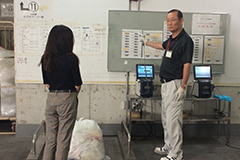
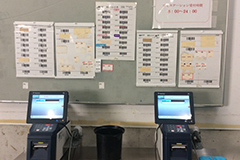
Thorough waste sorting and recycling
At Dew Hankyu Yamada and HEP Five, etc, recycling is conducted thoroughly by sorting cardboard, paper, cans, glass bottles, and plastic bottles.
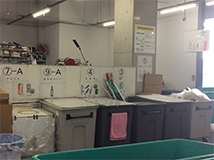
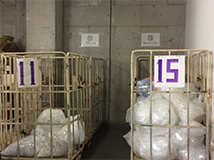
Using recycled trash bags
At HANKYU NISHINOMIYA GARDENS, recycled trash bags, which are made partly from plastic cupscollected at Hanshin Koshien Stadium, are used to collect garbage brought from common use areas. This activity contributes to HHR’s recycling-oriented efforts.
External Certifications
Acquisition of “3 Stars” and "Green Star" Rating in GRESB Real Estate Assessment
GRESB is an annual benchmarking assessment to measure ESG (Environmental, Social and Governance) integration of real estate companies and funds. In the 2025 GRESB Real Estate Assessment, HHR received a “3 Stars” in GRESB Rating, which is based on GRESB Overall Score and its quintile position relative to globalparticipants. It also won a “Green Star” designation for the seventh consecutive year by achieving high performanceboth in “Management Component” that evaluates policies and organizational structure for ESG promotion, and “Performance Component” that assesses environmental performance and tenant engagement of propertiesowned. HHR also received the highest “A Level” for the sixth consecutive year for the GRESB Public Disclosure, which assesses thewidth of ESG disclosure.
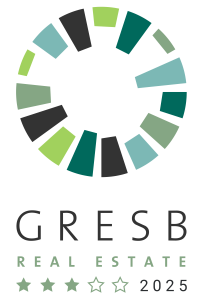
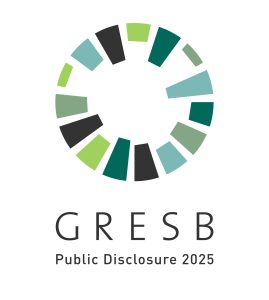
Acquisition of DBJ Green Building Certification
DBJ Green Building Certification is a program which Development Bank of Japan grants certifications after assessing properties in five ranks, from the perspective of environmental and social considerations.
In the future, HHR will continue to work to expand the number of certified properties.
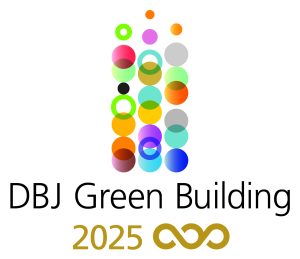
Properties with excellent environmental & social awareness
Acquisition of Certification for CASBEE for Real Estate
Certification for CASBEE for Real Estate is an evaluation system that evaluates and ranks buildings and structures in terms of their environmental performance by using CASBEE (Comprehensive Assessment System for Built Environment Efficiency). CASBEE is designed to comprehensively assess the quality of a building, including not only consideration of environmental practices that include using materials and equipment that save energy or achieve smaller environmental loads, but also consideration of interior comfort and scenic aesthetics.
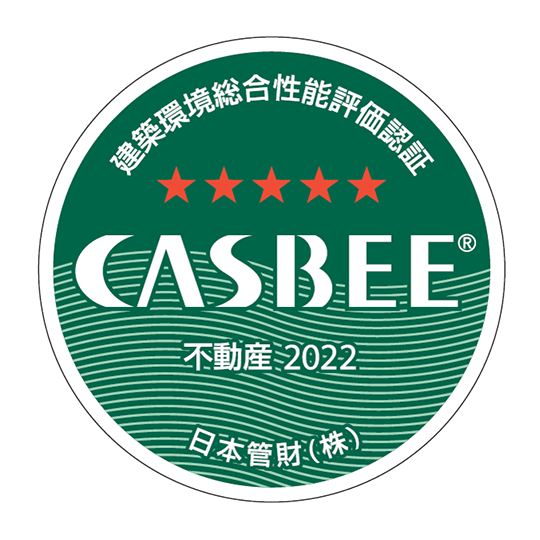
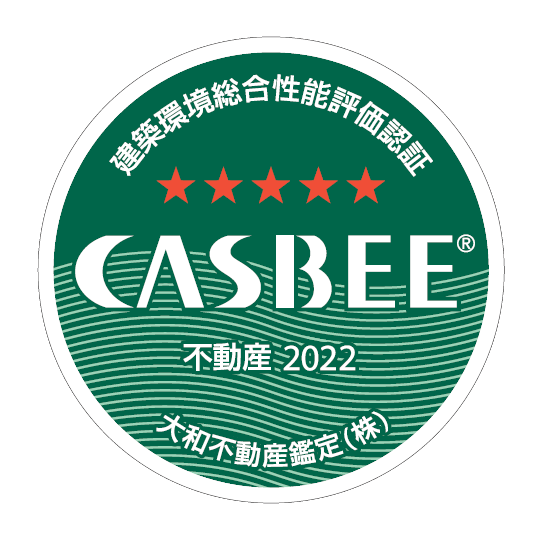
S Rank(Excellent)
Ratio of environmentally certified properties
The environmental certification acquisition rate (based on total floor area) across the entire portfolio is 58.8%.
- As of October 1, 2025

Green Finance
HHR has established Green Finance Framework (hereafter the “Green Finance Framework”) that complies with the Green Bond Principles 2021, the Green Loan Principles 2023, the Green Bond Guidelines 2022, and the Green Loan Guidelines 2022 for the implementation of green finance.
Green Finance Framework
Use of Proceeds
The proceeds of green finance are allocated to the acquisition of Eligible Green Assets (Note) or implementation of renovation work or the refinancing or reimbursement of borrowings (including green loans) or investment corporation bonds (including green bonds) which have been allocated to such.
- Assets that meet the following eligibility criteria
Eligibility Criteria
- Eligible Green Assets
The criteria apply to assets for which any of the following green building certifications was obtained or renewed within 36 months prior to the payment date of green bonds or the execution date of green loans or the reporting date based on the Green Finance Framework, or will be obtained or renewed in the future.
- DBJ Green Building Certification: 3 Stars, 4 Stars or 5 Stars
- CASBEE Certification
・CASBEE Certification for Buildings (New Construction)・ Certification for CASBEE for Real Estate:B+ Rank, A Rank or S Rank
・CASBEE by Local Government: B+ Rank, A Rank or S Rank (Note 1) - BELS Certification (FY2016 standard): 3 Stars, 4 Stars or 5 Stars (Note 2)
BELS Certification (FY2024 standard):
・Non-residential properties: Level 4, 5 or 6 (Note 3)
・Residences with renewable energy facilities: Level 3, 4, 5, or 6 (Note 4)
・Residences without renewable energy facilities: Level 3 or 4 (Note 4) - LEED Certification: Silver, Gold or Platinum (v4 or later for LEED BD+C)
- Within 3 years from the construction completion date
- Excluding factories, etc., including logistics facilities which exceed BEI=0.75.
- New acquisitions of existing buildings built before 2016 must be at least Level 3, excluding factories, etc., including logistics facilities that exceed BEI=0.75.
- New acquisitions of existing buildings built before 2016 shall qualify at Level 2 or higher, regardless of the use of renewable energy.
- Renovation Work
The criteria apply to renovation work aiming to meet any of the following standards which were completed within the past 36 months from the payment date of green bonds or the execution date of green loans, or will be completed in the future.
- Improvement of 1 step or higher in the number of Star or the Rank of any of the above-mentioned green building certifications.
- Reduction of 30% or more in any of carbon dioxide emissions, energy consumption or water consumption.
- Any other renovation work pursuing effective improvement in terms of the environment (in which a reduction of 30% or more in the volume of consumption or emissions is expected compared with conventional methods).
- Introduction or acquisition of renewable energy-related facilities.
Management of Procured Funds
The maximum amount of green finance is set at an amount arrived at by multiplying the sum of total acquisition price of Eligible Green Assets owned by HHR and amount of expenditure for renovation work that meet the eligibility criteria by the ratio of interest-bearing debt to total assets (hereafter the “Eligible Green Debt Amount”). HHR will manage so that the balance of the proceeds of green finance will not exceed the Eligible Green Debt Amount.
| Total acquisition price of Eligible Green Assets (millions of yen) (Note 1) | 77,061 |
|---|---|
| Ratio of interest-bearing debt to total assets (%) (Note 2) | 47.5 |
| Eligible Green Debt Amount (millions of yen) | 36,603 |
- The figure is as of October 1, 2025 (including kotocross Hankyu Kawaramachi, which obtained greenbuilding certification on August 29, 2025 ).
- The figure is as of May 31, 2025.
Assessment by External Institution
HHR has acquired Green1 (F), the highest ranking in the JCR Green Finance Framework Evaluation by Japan Credit Rating Agency, Ltd. (JCR) concerning the eligibility of the Green Finance Framework.
For the content and other details of the JCR Green Finance Framework Evaluation, please refer to the following website.
JCR Green Finance Framework Evaluation: https://www.jcr.co.jp/en/greenfinance/
Status of Finance
Balance of green bonds issued
The balance of green bonds issued is 4,300 million yen (as of December 29, 2025).
| Name | Issue amount (millions of yen) |
Issue date | Redemption date | Use of proceeds |
|---|---|---|---|---|
| Hankyu Hanshin REIT Fifth Series of Unsecured Investment Corporation Bonds | 1,000 | October 28, 2020 | October 28, 2030 | Repayment of the loans (including the loans from subsequent refinancing) that were required for acquisition of Shiodome East Side Building (Note), an Eligible Green Asset under the Green Finance Framework. |
| Hankyu Hanshin REIT Sixth Series of Unsecured Investment Corporation Bonds | 1,300 | February 20, 2024 | February 20, 2034 | Repayment of the loans (including the loans from subsequent refinancing) that were required for acquisition of Shiodome East Side Building (Note), an Eligible Green Asset under the Green Finance Framework. |
| Hankyu Hanshin REIT Seventh Series of Unsecured Investment Corporation Bonds | 2,000 | December 26, 2025 | December 26, 2030 | Repayment of the loans (including the loans from subsequent refinancing) that were required for acquisition of Hankyu Corporation Head Office Building, an Eligible Green Asset under the Green Finance Framework. |
- Since the Shiodome East Side Building subject to the use of funds has been transferred as of March 25 and June 30, 2025, the balance of the proceeds of green finance for each period will be managed to ensure that the balance does not exceed the Eligible Green Debt Amount.
Borrowing of Green Loans
The balance of green loans borrowed is 5,900 million yen (as of December 29, 2025).
| Lender | Amount borrowed (millions of yen) |
Drawdown date |
Maturity date | Use of proceeds |
|---|---|---|---|---|
| Syndicate of lenders arranged by MUFG Bank, Ltd. (Note 1) |
3,200 | February 29, 2024 | February 28, 2031 |
Repayment of the loans (including the loans from subsequent refinancing) that were required for acquisition of Shiodome East Side Building (Note 3), an Eligible Green Asset under the Green Finance Framework. |
| Syndicate of lenders arranged by MUFG Bank, Ltd. (Note 2) |
700 | February 29, 2024 | August 31, 2034 |
Repayment of the loans (including the loans from subsequent refinancing) that were required for acquisition of Shiodome East Side Building (Note 3), an Eligible Green Asset under the Green Finance Framework. |
| Development Bank of Japan Inc. | 2,000 | May 30, 2025 | May 31, 2030 |
Repayment of the loans (including the loans from subsequent refinancing) that were required for acquisition of Hankyu Corporation Head Office Building, an Eligible Green Asset under the Green Finance Framework. |
- The syndicate of lenders consists of MUFG Bank, Ltd., Mizuho Bank, Ltd., The Senshu Ikeda Bank, Ltd., Nippon Life Insurance Company and The Bank of Kyoto, Ltd.
- The syndicate of lenders consists of Nippon Life Insurance Company and The Bank of Kyoto, Ltd.
- Since the Shiodome East Side Building subject to the use of funds has been transferred as of March 25 and June 30, 2025, the balance of the proceeds of green finance for each period will be managed to ensure that the balance does not exceed the Eligible Green Debt Amount.
Impact reporting
HHR will continue to disclose the following indicators once a year as long as it has a sustainability bond finance balance.
Property names of Eligible Green Assets and Status of acquisition of environmental certifications (as of October 31, 2025).
| Property name | Acquisition price (millions of yen) |
DBJ Green Building | CASBEE | BELS | LEED |
|---|---|---|---|---|---|
| HANKYU NISHINOMIYA GARDENS | 18,300 | ★★★★★ | - | - | - |
| HEP Five | 6,468 | ★★★★★ | - | - | - |
| Kitano Hankyu Building | 7,740 | ★★★ | - | - | - |
| Dew Hankyu Yamada | 6,930 | ★★★ | - | - | - |
| Hankyu Corporation Head Office Building | 10,200 | ★★★ | - | - | - |
| SHIBAURA RENASITE TOWER | 3,475 | - | S | - | - |
|
GRAND FRONT OSAKA |
6,566 | - | S | - | - |
| GRAND FRONT OSAKA (South Building) |
9,212 | - | S | - | - |
| GRAND FRONT OSAKA (Umekita Plaza) |
- | A | - | - | |
| METS OZONE | 5,400 | - | A | - | - |
| kotocross Hankyu Kawaramachi | 2,770 | - | A | - | - |
| Total Amount | 77,061 |
Quantitative indicators of Eligible Green Assets
| FY2019 | FY2020 | FY2021 | FY2022 | FY2023 | FY2024 | |
|---|---|---|---|---|---|---|
| Energy consumption (MWh) | 48,403 | 47,580 | 44,472 | 49,490 | 48,703 | 53,232 |
| Water consumption (㎡) | 321,410 | 248,988 | 233,708 | 282,156 | 293,952 | 312,768 |
| Greenhouse gas emissions (t) | 14,149 | 13,610 | 13,482 | 12,843 | 15,459 | 11,632 |
| Number Eligible Green Assets | 6 | 8 | 8 | 9 | 9 | 10 |
-
As of October 1, 2025. The figures may be adjusted retroactively due to additional acquisition of past data, and revision of data collection range.
- Each figure is disclosed to the extent possible, showing the total of all figures from target properties owned in each fiscal year.
- Energy consumption and greenhouse gas emissions are derived by multiplying coefficients or other values based upon the Mandatory GHG Accounting and Reporting System established by the Ministry of the Environment.

